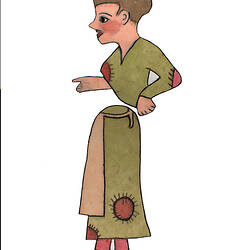There are different schools of thought as to whether shadow puppet theatre developed from the similar but older traditions in Indonesia, China and India or from a new form evolving in Egypt, Asia Minor and North Africa during the 11th and 12th centuries. As the Ottoman Empire grew, the tradition spread, evolving and adapting according to local customs, languages and stories. Turkish shadow puppet theatre was part of the artistic tradition of the diverse cultures of the Ottoman Empire, including people of Greek, Jewish, Albanian, Turkish and Arabic backgrounds. Within the framework of that diverse society, Karaghiozis stopped being exclusively Turkish and became transnational and multilingual and was instrumental in keeping languages, folklore and cultural traditions alive as artistic traditions became increasing lost and suppressed.
According to popular legend the two principal characters were modelled on two Turkish labourers, Karagoz and Hacivad, who lived during the 14th century. Their continual comic arguments on a mosque construction site halted work and the enraged sultan ordered their execution. He regretted his decision and a Turkish puppet master made shadow figures of Karagoz and Hacivad and his performance imitated the voices and mannerisms of the workmen and delighted the sultan. This was the beginning of the Karagoz puppet tradition.
From the 17th century through to the first decade of the 20th century, Karagoz - Karaghiozis in Greece - became the leading player in the shadow theatres of the regions. Audiences were varied - from royalty to middle class families to uneducated workers. Puppeteers usually worked from scenarios rather than finished scripts so that they could adapt storylines according to the audience.
Greece adopted the shadow puppet theatre with gusto and created a form all its own, although there are only a handful of puppet masters left worldwide. The Greek shadow puppet theatre became a vital way for Greeks to see, hear and maintain their cultural and artistic traditions. It is still active today. The moral tales enacted by the puppeteers feature satirical observations about the social and political issues of the time - a form of social commentary understood by people of all classes. The central character is Karaghiozis. The Greek Karaghiozis is wiser and less of a clown than Karagoz, his Turkish brother. He is poor and uneducated, relying on his cunning and ready wit to extricate himself from precarious situations. He is a Greek folk hero for children and adults. Karaghiozis often mocks the various characters and includes them in his desperate adventures. He also pays them shameless compliments in order to avoid being harassed. Although totally uneducated, Karaghiozis manages to bluff his way into different jobs, allowing the puppeteer to satirise prominent figures, professions and contemporary issues.
The puppet show is usually accompanied by a small group of musicians and a singer, and much shouting and noise and witty dialogue keep the audience laughing. While the plots are familiar, the puppeteer addresses topical issues with impromptu wise cracks, observations and even bawdy repartee. Representations of Turkish and Jewish people can be unflattering, even prejudiced. The puppets are traditionally made from translucent donkey or camel skin but in more recent decades, puppeteers have used clear brushed acrylic to make their puppets. They are cut and dyed so the shadow on the screen creates a stained glass window effect. The puppeteer manipulates the puppets using detachable rods. The multiple joints also allow the puppets to jiggle, dance and make gestures.
References:Malkin, Michael, R. (1977). Traditional and Folk Puppets of the World, A.S. Barnes & Co., Inc., N.J.
Simmen, Rene (1975). The World of Puppets, Elsevier, Phaidon, London
Hogarth, Ann & Bussell, Jan (1985). Fanfare for Puppets!, David & Charles Publishers Ltd, USA
Yayannos, A & Ar and Dingli, J. (1976). The World of Karaghiozis
More Information
-
Keywords
performance art, Cultures and histories : Melbourne and Victoria
-
Authors
-
Contributors
-
Article types

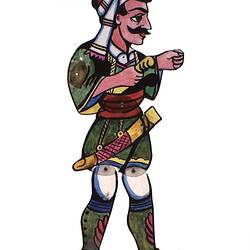
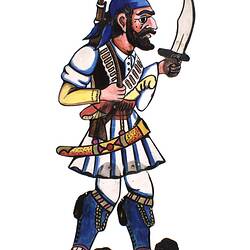

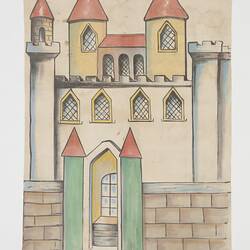
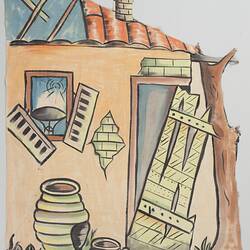
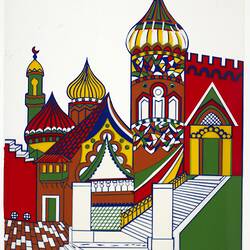
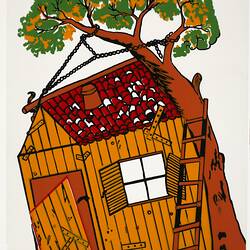













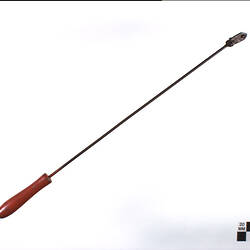





![Puppet - Greek Shadow Puppet Theatre, Karaghiozis [classic], 1960s](/content/media/34/327134-thumbnail.jpg)
